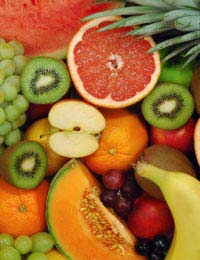Healthy Eating Tips for School

When children are not at home, it’s hard to control what they eat, as snacks or as meals. While school lunches are much healthier than they used to be, some children and parents prefer packed lunches. For healthy snacks, packed lunches and drinks, it’s important to focus on reducing salt, fat and sugar wherever possible.
Healthy Snacks
Children need snacks as well as regular meals, especially if they are particularly active. Instead of giving them high fat and high sugar snacks all the time (though they are fine as occasional treats), give them healthy snacks that are still tasty.Some simple switches:
- fresh fruit instead of chocolate
- dried fruit instead of sweets
- scones or fruit bread instead of cakes
- cereal bars (watch out for fat and sugar levels) instead of biscuits
- unsalted nuts, nut and fruit mixes or seed mixes instead of salted or dry roasted peanuts
- cubes of cheese or sticks of raw vegetables instead of crisps.
Healthy Drinks
It’s important for children to drink plenty, especially in hot weather or when they have been exercising a lot. Many schools have water fountains or water coolers, but some children prefer to take their own. Healthy drinks for children to take to school include bottles of water (buy a reusable water bottle, or refill an empty bottle to avoid waste), unsweetened diluted fruit juice or juice-based drinks, or home-made smoothies, milk, milkshakes or yoghurt-based drinks (only if they have access to a fridge).In the summer, try freezing cartons (not cans or bottles) of fruit juice – they will be thawed by break time or lunchtime, but will still be deliciously cold. They will also help keep sandwiches or fruit snacks fresh and cool.
Healthy Packed Lunches
If children have packed lunches rather than school dinners, it’s important to make sure that the food is healthy. Packed lunches should contain carbohydrate (like bread or rice), protein (like meat, fish, eggs, pulses or nuts), calcium (in dairy foods or dairy substitutes like soya), a portion of vegetables and a piece of fruit.To add variety, make sandwiches with different varieties of bread, or use wraps, pitta breads or bread rolls (keep a variety in the freezer and just thaw what’s needed each day). Wholegrain/wholemeal bread is healthier than white bread, and provides a slower release of carbohydrate (so keeps children full for longer), as well as providing fibre and other vitamins. Very young children shouldn’t have too much fibre, though, as it can fill them up too quickly.
Healthy fillings include lean meat, peanut butter, cheese or fish, and a bit of salad will count towards their ‘five a day’. For a change, make salads from left over couscous or pasta, with nuts, fish, meat or chopped up cooked or raw vegetables, or put in a piece of leftover pizza, quiche or frittata. Houmus (bought, or homemade by whizzing up chickpeas and spices in a blender) makes a healthy dip with sticks of celery, pepper and carrot – more towards the five a day.
Finish off with fresh or dried fruit and a pot of yogurt or rice pudding (but only if there is access to a fridge). If not, pots of sugar-free jelly don’t have to be kept cool.

Re: Superfoods on a Budget
I just checked out these fantastic tips for buying superfoods on a budget! Eating healthy doesn’t have to be expensive. Can’t wait to try…
Re: Fun Facts: How Many Calories Does a Child Burn?
hi, im eleven yrs. I weigh about 100 lbs and believe I am over the normal weight. I am about 4’10 ft. I…
Re: Fun Facts: How Many Calories Does a Child Burn?
I want to clear this up for everybody worried about their weight, especially at a young age you shouldn’t…
Re: Dealing with a Child that is Always Hungry
I am the great grandmother of an 8 year old that I mostly take care of her mom is around but she totally depends…
Re: Fun Facts: How Many Calories Does a Child Burn?
I’m 11 years old and recently got a smart watch. This isn’t a big question but I can’t find how many…
Re: Dealing with a Child that is Always Hungry
I'm immediately suspicious of an article that suggests cereal as a healthy snack. Cereal (especially cereal…
Re: Fun Facts: How Many Calories Does a Child Burn?
How many calories SHOULD an average twelve year old burn daily???
Re: Fun Facts: How Many Calories Does a Child Burn?
I'm 9 years old and I'm trying to set up a health journal but I don't know how many calories I should…
Re: Fun Facts: How Many Calories Does a Child Burn?
Hiw much calories should an average 10 year old burn a day?
Re: Dealing with a Child that is Always Hungry
I’m 16 and my sister is 11 years old 57 inches and weighs 90 pounds she only drinks like 2 or 3 16 ounce bottles…